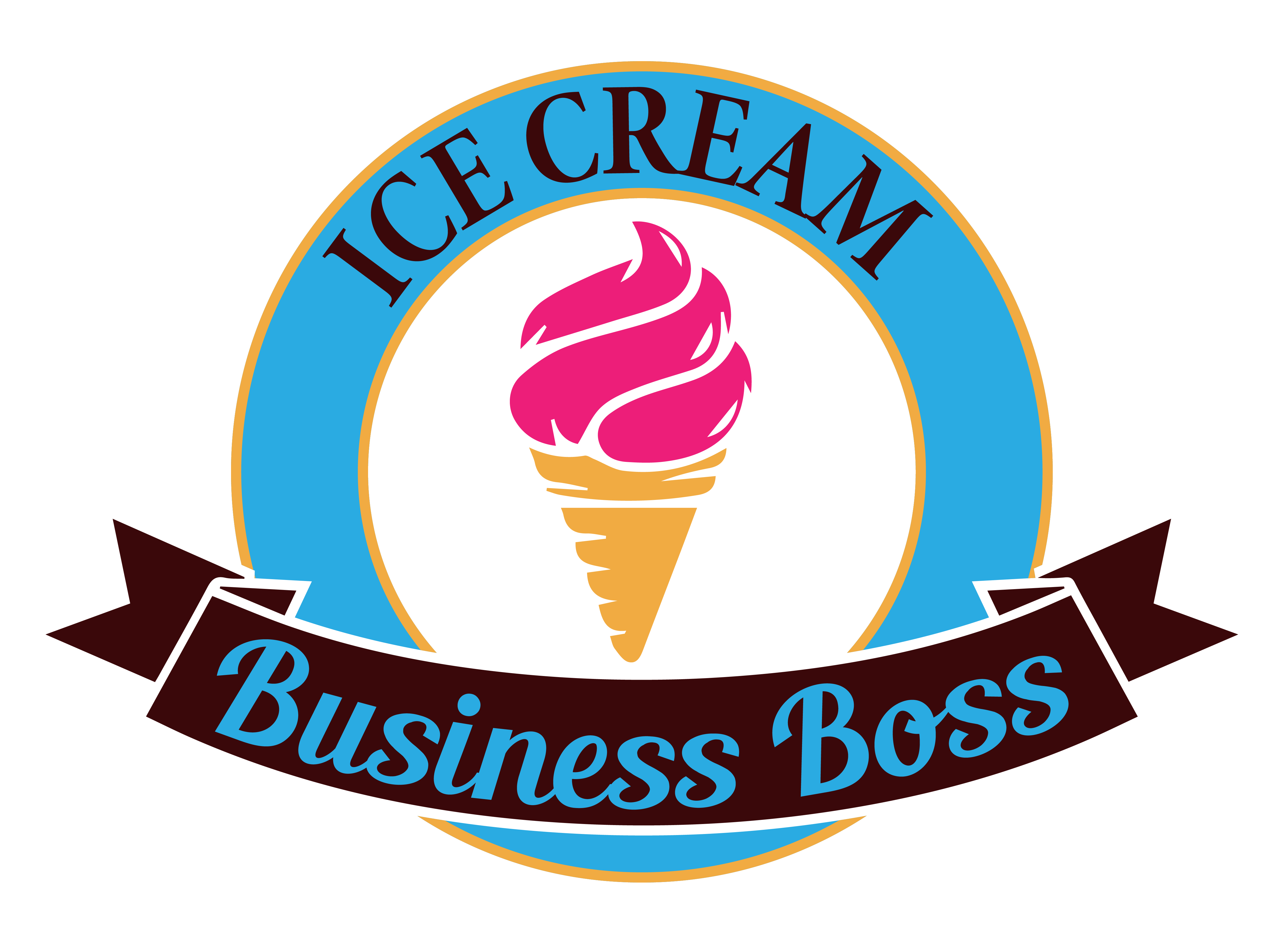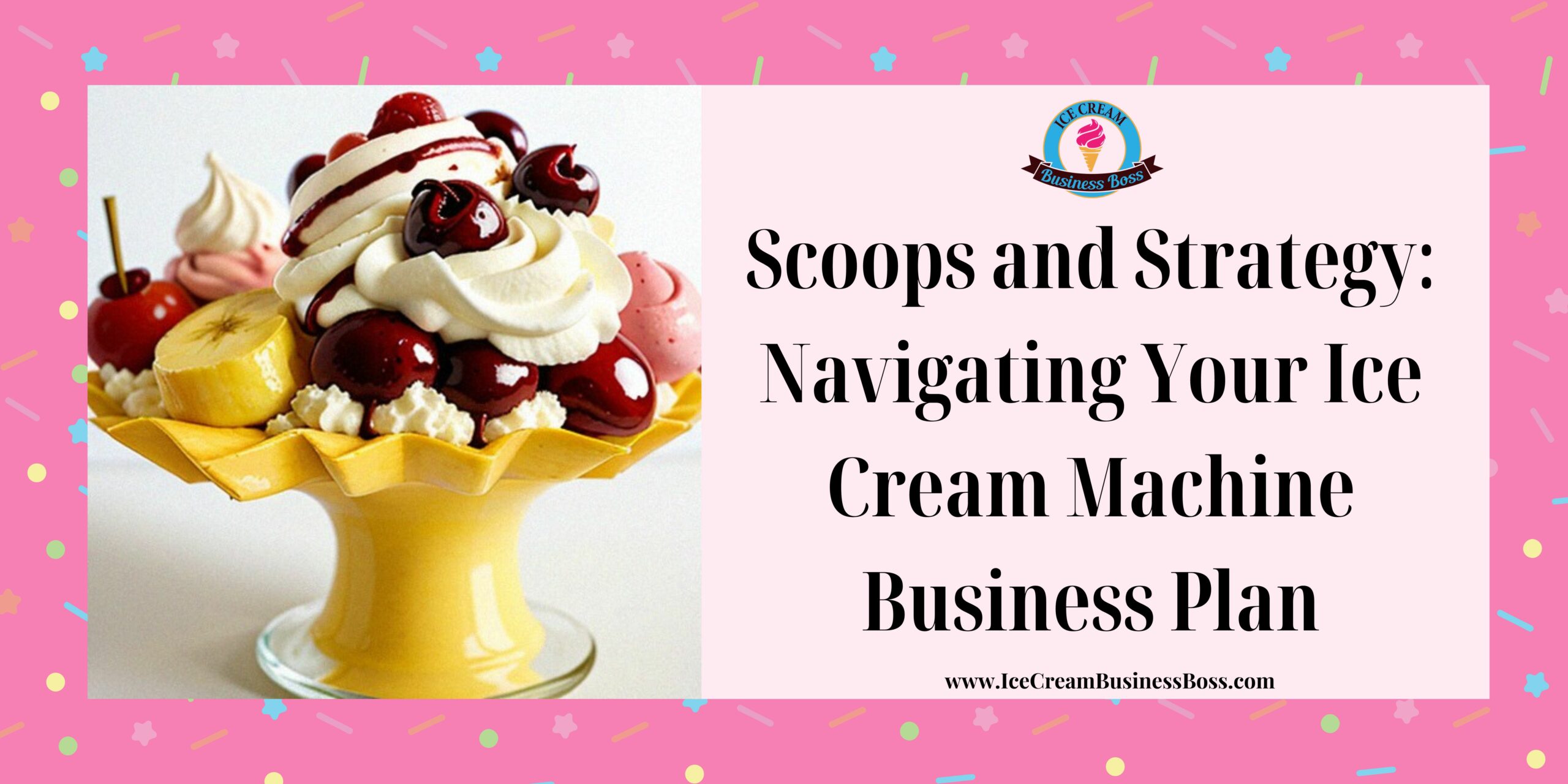Starting an ice cream machine business is an exciting venture that combines the pleasure of making delightful frozen desserts with the possibility of financial growth. However, before you can start scooping up smiles from eager consumers, you’ll need a well-thought-out ice cream machine business plan. This plan acts as your strategic roadmap, guiding you through the complexities of the ice cream industry, assisting you in navigating market obstacles, and ensuring your business stays on track for growth.
To create an ice cream machine business plan, you should research the market, select machine types, estimate costs and revenue, outline marketing strategies, detail operational plans, and define short-term and long-term goals.
In this article, we’ll help you through the steps of developing an efficient ice cream machine business plan. So take your favorite flavor, settle in, and let’s go on a journey to learn how to write a winning ice cream machine business plan.
Market Research: Understanding Your Niche
Laying a solid foundation through thorough market research is imperative before starting your adventure into the world of ice cream machines. This first phase is essential for the development of your ice cream business since it offers insightful information that can help you run your company.
Check the specifics of the ice cream sector in your neighborhood to start your market analysis. It is crucial to have a thorough awareness of your direct competitors. Determine the identities of your rivals, as well as their advantages and disadvantages in the market. This information can help you develop effective strategies and identify your unique selling offer.
It is essential to comprehend the current state of ice cream items. What flavors of ice cream are consumers most fond of? Are premium, low-fat, or artisanal products popular right now? Look into the newest flavor and presentation advancements and breakthroughs. Keeping up with these trends can help you maintain your competitive edge and provide what your clients want.
Your target market is the secret to your company’s growth. To profile your target customers, do an extensive study. Analyze their ice cream flavor, serving size, and packaging preferences. Age, gender, income level, and geography are just a few examples of demographic data that can give you important insights into your target market. Understanding their purchasing patterns and decision-making procedures can also help you to properly adjust your marketing campaigns.
This study has two results in total. In the beginning, it will help you locate market gaps that your ice cream firm can fill. These holes may give opportunities for new product development or creative marketing strategies. Second, it will enable you to determine whether there is enough demand for the ice cream products you intend to sell.
Selecting the Right Machine Types

In the process of starting a prosperous ice cream business, choosing the right ice cream machines is a crucial choice. The suitability of these machines, which form the foundation of your business, can have a big impact on both your general effectiveness and client pleasure. The selection of equipment is an important factor in your entrepreneurial activity since it should be in line with your business model and the specific ice cream goods you intend to sell.
There are many different kinds of ice cream machines, but three popular choices include soft serve machines, batch freezers, and gelato machines. Each of these devices has a certain function, as well as advantages and things to keep in mind.
Soft-serve machines are a common option, particularly for establishments that specialize in quick service and provide soft, creamy ice cream. They are renowned for being simple to use and having reliable product quality. For making traditional ice cream cones and sundaes, soft-serve machines are ideal.
On the other hand, firms that stress artisanal and handcrafted ice creams should use batch freezers. You can experiment with a huge variety of flavors, textures, and add-ins thanks to these devices. They are ideal for producing gourmet ice cream in small quantities.
Gelato machines serve a particular market segment by providing smoother and denser Italian-style gelato. A gelato machine is a must-have if you want to focus on selling gelato. They are made to keep the ideal consistency and texture needed for this kind of frozen dessert.
It’s important to take into account aspects other than the machine type while making your choice. Compare the machine’s capacity to the predicted amount of production. Make sure the equipment you select is user-friendly because staff productivity will be impacted by simplicity of use. Consider the upkeep requirements as well, as regular maintenance is necessary to extend the lifespan of your equipment.
Checking energy-efficient choices is essential in the era of sustainability and cost-efficiency. Although these machines may cost more upfront, they can result in significant long-term operational cost reductions.
Estimating Costs and Revenue
A key component of your overall business strategy should be creating a thorough financial plan, especially if you’re going into the ice cream machine industry. This financial roadmap not only aids in fundraising but also acts as a compass for sustainable growth. It’s critical to carefully evaluate both your costs and revenue estimates to create a solid financial strategy.
List all the expenses involved in setting up and running your ice cream machine business to start. This includes several expenses, including those related to your employees’ wages, utility costs, lease or rent payments for your physical location, and equipment costs. Each of these components is essential to the day-to-day operation of your company and needs to be accurately taken into account.
When purchasing high-quality ice cream makers and related appliances, equipment prices might be costly. The cost of your chosen location’s lease or rent will vary according to its size, location, and state. Utilities, which include energy, water, and gas, are recurring costs required to power your machines and keep the environment suitable for consumers.
To adhere to legal requirements and make sure your firm runs within the confines of the law, licensing and permits are essential. To attract and keep qualified workers, employee compensation should be competitive with market rates. You must also take in variable expenses, such as those for ingredients and packaging materials, which can change depending on the market’s prices and demand.
Realistic revenue estimates that are based on your market research findings must be made for the revenue side of your financial strategy. Make an estimation of your possible consumer base and their purchasing patterns using the data you have gathered. To prepare for revenue variations, take into account a variety of possibilities, such as high and low seasons. To balance profitability with a competitive price that appeals to your target market, pricing strategies should be carefully developed.
The key to growth in this process is to stay flexible and adaptive. Be ready to modify your financial strategy when conditions change or as you learn more about your company’s growth. To make sure that your ice cream machine business maintains a path to financial sustainability, periodically review and revise your estimates.
Outline Marketing Strategies

Effective marketing is not just a luxury in the cutthroat world of ice cream machine enterprises; it is an imperative need. The growth of your business depends on how you can draw in and hold on to clients. Your marketing techniques operate as the link connecting your offerings with your target demographic. It’s crucial to match your plans with your precise target market and overarching corporate objectives to develop an effective marketing strategy.
Understanding your target audience is crucial, first and foremost. What are the tastes and routines of your potential customers? You can better target your marketing efforts to reach them if you are aware of this information. For instance, if tech-savvy millennials are your target market, you can give online channels like social media marketing and email advertising top priority. In contrast, regional marketing and neighborhood gatherings could be more effective if you’re aiming for families.
Having a good online presence is essential in the current digital era. If you want to build a platform where customers can learn about your offerings, browse your menu, and even place orders online, consider investing in website development. Another effective strategy for connecting with your audience and establishing a devoted consumer base is social media marketing. To create buzz and excitement, post tantalizing pictures of your ice cream creations, promos, and client reviews regularly on your social media pages.
Local marketing is crucial for drawing in clients from your immediate area. To promote your ice cream machine business, look at choices like newspaper ads, fliers, and local radio spots. Collaboration with neighborhood establishments like cafes and eateries can also be advantageous to both parties. Your reach can be increased and new potential clients can be introduced to your items through joint promotions or cross-marketing campaigns.
It’s critical to establish a strong brand identity and unique selling propositions (USPs) to stand out in a crowded market. Your company’s principles, personality, and the caliber of your ice cream should all come through in your brand. Highlight your unique selling points, such as your handcrafted flavors, environmentally friendly business procedures, or first-rate customer service.
Include a well-considered marketing budget in your entire financial plan. This budget should cover a variety of marketing strategies so that you can monitor and evaluate the growth of each tactic. Be ready to modify your budget in response to performance and changing market circumstances.
Where to find the perfect ice cream shop business plan example? Visit this article here to find out.
Detail Operational Plans
The growth of your ice cream machine business depends on creating a thorough operating plan. This strategy should provide a thorough understanding of how your business operates daily, including a variety of topics like hiring, training, inventory management, and quality assurance. You may lay a strong basis for effective and long-lasting operations by doing this.
Your operational plan’s workforce needs are an important component. Decide how many workers you’ll need for different positions, such as those in management, customer service, and ice cream manufacturing. To ensure you recruit and keep the best individuals, clearly define job tasks, write job descriptions, and develop hiring procedures.
Equally important is employee training. Create a training program that provides your personnel with the abilities and information necessary for their positions. This can entail instructing them on how to run the ice cream machines, adhere to food safety regulations, and deliver first-rate customer service. Updating training frequently will help maintain high standards.
Another crucial component is inventory management. Establish a system for keeping track of and replenishing supplies such as ice cream mix and other ingredients. Your daily operations won’t be disrupted by running out of vital supplies thanks to effective inventory management.
Create a manufacturing schedule to preserve product uniformity. Peak demand periods, seasonal fluctuations, and well-liked taste combinations should all be taken into account in this plan. You can decrease waste and guarantee a consistent supply of ice cream goods by doing this.
Your operations plan must also include health and safety procedures. To protect both customers and staff, adhere to industry standards. To prevent accidents and guarantee the greatest level of service, put cleanliness processes, food handling guidelines, and safety precautions into practice.
Define Short-Term and Long-Term Goals

A crucial first step in guiding your ice cream machine business toward development and eventual growth is setting clear, well-defined goals. These objectives provide you with a feeling of direction and act as a yardstick for measuring your progress over time. You can create both short-term and long-term goals for your business venture, both of which will support your total development and stability.
Your route to achievement is lined with short-term goals. They are intended to be completed in a short amount of time, usually between a few months and a year.
For instance, you might establish a short-term objective of hitting a particular monthly sales target, which can be used to assess the current state of your company’s finances and performance. Adding more tempting ice cream flavors to your menu or growing your social media following are two more short-term goals that can improve client engagement and brand recognition immediately.
Long-term goals, on the other hand, describe your company’s overall ambitions and where you see it in the more distant future. These goals frequently take years to complete and demand consistent work. Long-term objectives for your ice cream machine business can include expanding to numerous locations, building a well-known and reputable brand in your community, or even exploring franchising options. These aspirational objectives provide you with a wider view of the development of your company.
Make sure your goals are SMART — specific, measurable, achievable, relevant, and time-bound — to ensure their effectiveness. There should be no doubt about what you intend to accomplish because specific goals make this evident.
Goals that can be measured include measures that can be used to gauge achievement. Realistic and reachable goals are those that can be completed given your existing resources and situation. Relevant objectives line up with the mission and goals of your company. Time-bound objectives have a deadline, which gives your work more drive and focus.
Frequently Asked Questions
What kinds of ice cream equipment should I think about for my business?
The sort of ice cream machine you need depends on your business model and menu selections. Soft serve machines, batch freezers, and gelato machines are all popular possibilities. Soft-serve machines are adaptable and can accommodate a wide range of flavors, whereas batch freezers are great for handmade ice creams and gelato. When making your decision, consider issues such as capacity, simplicity of use, and maintenance requirements.
How much does it cost to establish a business selling ice cream machines?
The initial cost of beginning an ice cream machine business can vary greatly depending on factors such as location, size of operation, and machine type. Consider expenses like equipment purchase or lease, storefront rent or lease, utilities, licensing fees, initial inventory, and marketing costs. Depending on your circumstances, a preliminary estimate could range from $20,000 to $100,000 or more.
What are some good marketing techniques for promoting my ice cream machine company?
Marketing is essential for recruiting clients for your ice cream machine company. Consider using a combination of online and offline techniques. Create a good website and use social media platforms to highlight your products and engage with potential buyers.
Flyers, newspaper ads, and collaborations with surrounding businesses can also be useful forms of local advertising. Holding special events, creating loyalty programs, and actively participating in community activities can all assist in increasing brand recognition and client loyalty. Remember to budget for marketing to maintain a constant and appealing presence in your market.
The information provided by IceCreamBusinessBoss.com (“The Site”) is for general informational purposes only. All information on the Site is provided in good faith, however, we make no representation or warranty of any kind, express or implied, regarding the accuracy, adequacy, validity, reliability, availability, or completeness of any information on the Site. Under no circumstance shall we have any liability to you for any loss or damage of any kind incurred as a result of the use of the Site or Reliance on any information provided on the Site. Your use of the Site and your reliance on any information on the Site is solely at your own risk. This blog post is for educational purposes only and does not constitute legal advice. Please consult a legal expert to address your specific needs. Terms and Conditions.

Hi! I am Shawn and I am a happy individual who happens to be an entrepreneur. I have owned several types of businesses in my life from a coffee shop to an import and export business to an online review business plus a few more and now I create online ice cream/gelato business resources for those interested in starting new ventures. It’s demanding work but I love it. I do it for those passionate about their business and their goals. That’s why when I meet a ice cream/gelato business owner, I see myself. I know how hard the struggle is to retain clients, find good employees and keep the business growing all while trying to stay competitive.
That’s why I created Ice Cream Business Boss: I want to help ice cream and gelato business owners like you build a thriving business that brings you endless joy and supports your ideal lifestyle.

